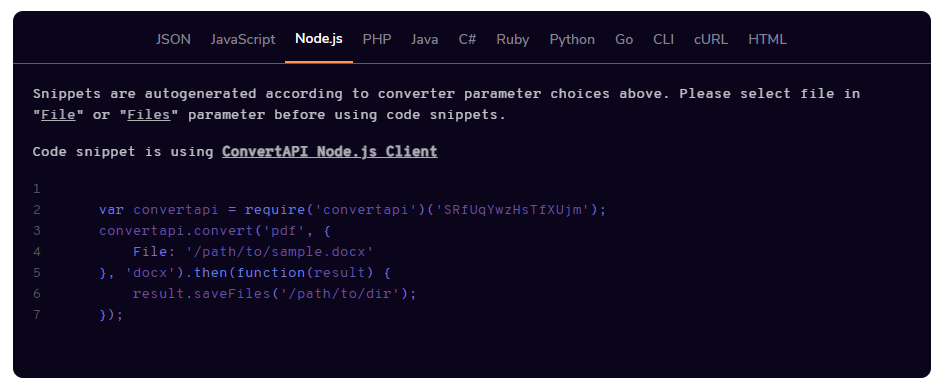

Select the Review + create button at the bottom of the page.Īfter validation runs, select the Create button at the bottom of the page.Īfter deployment is complete, select Go to resource.Īzure App Service supports two types of credentials for FTP/S deployment.
#NODEJS DOCUMENT FREE#
To change to the Free tier, select Change size, select Dev/Test tab, select F1, and select the Apply button at the bottom of the page. Under App Service Plan, select Create new App Service Plan.

Select Node 14 LTS Runtime stack, an Operating System, and a Region you want to serve your app from. Under Instance details, type a globally unique name for your web app and select Code. In the Basics tab, under Project details, ensure the correct subscription is selected and then select to Create new resource group. "src_path": "//home//cephas//myExpressApp"
#NODEJS DOCUMENT CODE#
ĭeployment endpoint responded with status code 202 This operation can take a while to complete.
#NODEJS DOCUMENT ZIP#
Getting scm site credentials for zip deployment It then gives the message, "You can launch the app at which is the app's URL on Azure.Ĭonfiguring default logging for the app, if not already enabledĬreating zip with contents of dir /home/cephas/myExpressApp. While running, it provides messages about creating the resource group, the App Service plan, and the app resource, configuring logging, and doing ZIP deployment. The command may take a few minutes to complete.

#NODEJS DOCUMENT WINDOWS#
To create a Windows app instead, use the -os-type argument.

Select the location you want to serve your app from. Select Create a new resource group, then enter a name for the resource group, such as AppServiceQS-rg. The browser should display the Express default page. Once deployment completes, select Browse Website in the notification popup. While Visual Studio Code provisions the Azure resources and deploys the code, it shows progress notifications. This way, as long as you're in the same workspace, Visual Studio Code deploys to the same App Service app each time. In the popup Always deploy the workspace "myExpressApp" to ", select Yes. In Select a pricing tier, select Free (F1) and wait for the resources to be provisioned in Azure. In Select a runtime stack, select the Node.js version you want. The name must be unique across all of Azure and use only alphanumeric characters ('A-Z', 'a-z', and '0-9') and hyphens ('-'). Type a globally unique name for your web app and press Enter.


 0 kommentar(er)
0 kommentar(er)
